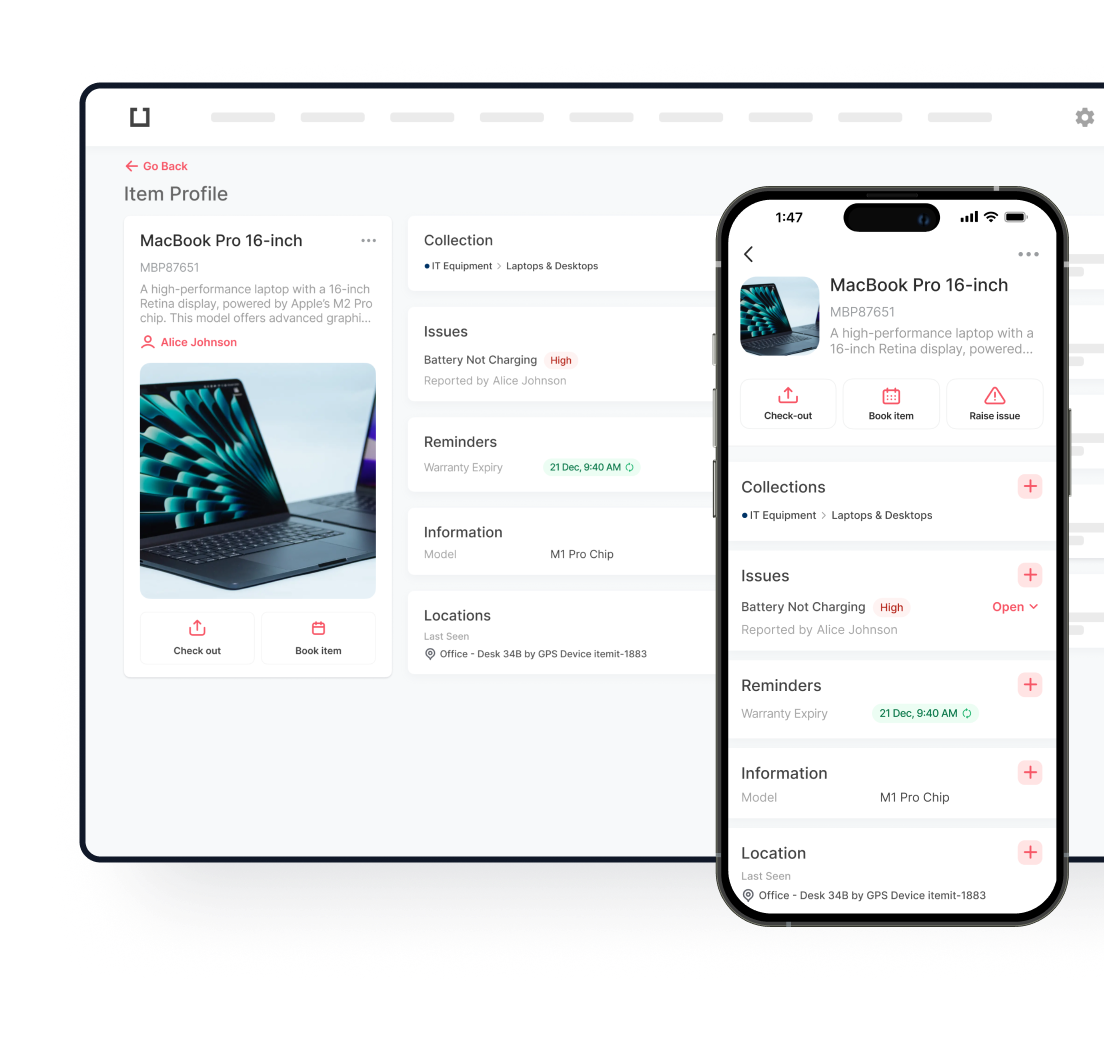
The foundation of good business operations is accurate management of stock, although many firms find it difficult to start with the fundamental step of computing initial inventory accurately. This important number immediately affects your financial reporting, tax responsibilities, and business decisions and forms the basis for all later inventory computations.
From knowing fundamental inventory calculations to using advanced inventory ordering systems, we will discuss the key elements of successful order and inventory management in this all-inclusive book. These techniques and formulas can help you change your approach to inventory control, whether your organisation is tiny and you want to increase efficiency or you are an inventory professional trying to streamline your procedures. Mastery of these ideas will help you lower expenses, cut waste, and build a more responsive supply chain that satisfies consumer needs and maximises your working capital.
Understanding Order and Inventory Management
Competitive business environment: mastering order and inventory management has become a key difference between successful companies and those trying to keep profitability. This basic company need includes all tasks, including stock level monitoring, control, and optimisation, as well as effective client order processing.
Unlike many believe, inventory and order management is a strategic discipline that directly affects your bottom line. It is not only about counting goods. When done deliberately, it becomes the pillar of operational excellence since it guarantees exactly what you need, exactly when you need it.
An effective order and inventory management strategy delivers benefits that ripple throughout your entire organisation. By maintaining optimal inventory levels, businesses minimise capital tied up in excess stock while preventing costly stockouts that can damage customer relationships. This delicate balancing act requires both analytical precision and practical insight.
Companies that excel at inventory and order management typically experience the following:
- Reduced storage costs through lean inventory practices
- Minimised waste from expired or obsolete products
- Enhanced cash flow through improved working capital management
- Increased customer satisfaction through reliable product availability
- Better decision-making based on accurate inventory data
The real power emerges when businesses integrate these practices with modern technology solutions. Manual, error-prone procedures become simplified operations with real-time supply chain visibility thanks to inventory ordering systems. When deciding on important purchases or fulfilment that directly impact your consumers’ experience, this transparency becomes essential.

Key Components of an Efficient Order and Inventory Management System
A well-structured order and inventory management system that connects various elements of your supply chain is at the heart of business operational excellence. This infrastructure serves as the central nervous system of your operations, coordinating the flow of goods from procurement to fulfilment.
Integrating an inventory ordering system into your business operations isn’t merely a technological upgrade—it’s a strategic imperative. Such systems transform chaotic, reactive inventory practices into proactive, data-driven processes that anticipate needs rather than simply responding to them. The most effective systems create a unified view of inventory across multiple locations, sales channels, and stages in your supply chain.
Inventory and purchase order software plays a pivotal role in this ecosystem by automating routine tasks that traditionally consumed valuable staff time. These sophisticated tools eliminate manual data entry, reduce human error, and provide instantaneous updates on stock levels. The automation extends beyond basic counting to include:
- Automated reorder triggers based on predetermined thresholds
- Real-time synchronisation between sales platforms and warehouse management
- Supplier relationship management and order tracking
- Detailed reporting on inventory turnover and performance metrics
- Forecasting capabilities to anticipate seasonal fluctuations
Modern purchase order and inventory management solutions offer integration capabilities with accounting, e-commerce, and shipping platforms, creating a seamless flow of information across your entire business infrastructure. This interconnectedness enables businesses to make decisions based on comprehensive data rather than departmental silos.
The transformative impact of software inventory and order management becomes particularly evident in multi-channel selling environments where businesses must maintain consistent inventory information across various platforms. Without such systems, the risk of overselling, underselling, or misallocating inventory increases exponentially as business complexity grows.
Implementing an Effective Inventory Ordering System
Choosing an appropriate order and inventory management system calls for careful thought of your particular company’s needs. The perfect answer should fit your operating scale, industry-specific difficulties, and expansion direction. Pay more attention to how the system solves your particular problems and bottlenecks than you would be amazed by feature lists.
Implementing advanced inventory management capabilities should include protocols for identifying and addressing obsolete inventory before it becomes a financial burden. The right system will help flag items with declining turnover rates and assist in creating strategic disposition plans that maximise recovery value.
When evaluating options, consider these critical factors:
- Scalability to accommodate business growth
- User-friendliness for staff adoption and productivity
- Integration capabilities with existing business systems
- Mobile accessibility for warehouse staff and field operations
- Reporting functionality and data visualisation
- Vendor support and implementation assistance
- Total cost of ownership, including training and maintenance
Once implemented, establishing efficient reorder protocols becomes essential. This is where the reorder quantity formula proves invaluable. This mathematical approach determines the optimal point at which new stock should be ordered, factoring in lead times, demand variability, and safety stock requirements.
The formula typically incorporates:
- Average daily usage rate
- Supplier lead time
- Safety stock requirements
- Economic order quantities
Setting statistically calculated reorder points helps companies avoid the typical mistakes of emotive or arbitrary ordering decisions. This data-driven method guarantees that inventory levels stay ideal—neither too high nor low—which directly affects customer satisfaction and carrying costs.
Effective application also depends on staff training and process redesign to fully use the features of your new system. The technology itself solves only part of the equation; complementary operational practices must evolve alongside it to realise the full potential of your inventory ordering system.

Improving Order Processing and Stock Control
Simplifying order inventory systems offers a major chance for operational improvement. From initial customer purchase to final delivery, analysing every stage in your order fulfilment process helps you find and remove bottlenecks causing delays and expense escalation.
Combining your inventory control with a thorough asset tracking system guarantees that all equipment required for order fulfilment stays in ideal shape, therefore producing synergistic benefits. By keeping sight of both inventory and the tools needed to manage it, this combined strategy lowers unanticipated downtime and speeds up order processing.
Effective strategies include:
- Warehouse organisation using ABC analysis (categorising inventory by value and movement frequency)
- Batch processing of similar orders to improve picking efficiency
- Cross-docking for high-velocity items to minimise storage requirements
- Just-in-time inventory practices for appropriate product categories
- Regular cycle counting instead of disruptive full inventory counts
The role of automation in inventory and order management cannot be overstated. Through robotics and conveyor systems, technological advances today let companies automate hitherto labour-intensive tasks, including data entry, order routing, and even physical warehouse operations. Eliminating hand counting and recording helps barcode and RFID technology further improve accuracy and speed.
Predictive analytics are included in advanced systems to forecast stock demands depending on past performance, seasonal trends, and even outside variables such as weather or economic data. By moving inventory control from reactive to predictive, this proactive method helps companies keep ahead of demand variations rather than always reacting to them.
Applying these changes methodically helps companies build a more agile and responsive inventory ecosystem that adapts to changing market conditions while preserving the highest service standards and operational effectiveness.
Essential Inventory Formulas for Better Management
Understanding and applying the right mathematical models form the cornerstone of scientific inventory management. The order quantity formula, commonly known as the Economic Order Quantity (EOQ), helps businesses determine precisely how many units to order to minimise total inventory costs. This formula balances the competing costs of holding inventory against the costs of placing orders:
EOQ = √(2DS/H)
Where:
- D represents the annual demand quantity
- S represents the ordering cost per order
- H represents holding cost per unit per year
This formula provides the mathematically optimal order size that minimises combined ordering and holding costs, creating significant savings for businesses that consistently apply it.
The ordering cost formula offers crucial insights into how order frequency impacts your overall inventory expenses. These costs include:
- Administrative time to create and process purchase orders
- Shipping and handling expenses
- Receiving and inspection costs
- Invoice processing and payment costs
Understanding these components allows businesses to make informed decisions about order frequency versus order size, particularly when suppliers offer volume discounts that must be weighed against increased holding costs.
Effective inventory calculation methods provide the foundation for all inventory management decisions. Beyond simple counting, sophisticated calculations include:
- Turnover ratio (cost of goods sold divided by average inventory value)
- Days inventory outstanding (average inventory divided by daily cost of goods sold)
- Gross margin return on investment (gross margin divided by average inventory investment)
- Stockout rates and service level calculations
These metrics provide multi-dimensional visibility into inventory performance beyond basic quantity tracking. By regularly calculating and monitoring these figures, businesses gain deeper insights into how efficiently their inventory investment is generating returns.

Choosing the Right Software for Order and Inventory Management
When selecting inventory and purchase order software, businesses should prioritise features that address their specific operational challenges rather than being swayed by the latest technological buzzwords. Essential functionality to consider includes:
- Multi-location inventory tracking
- Serial number and lot tracking capabilities
- Barcode and mobile scanning integration
- Supplier management and performance analytics
- Customer order history and preference tracking
- Customisable reporting and dashboards
- Returns and warranty management
Cloud-based purchase order and inventory management solutions offer compelling advantages over traditional on-premise installations. These benefits include:
- Reduced upfront investment with subscription-based pricing
- Automatic updates and maintenance without IT involvement
- Anytime, anywhere access for remote teams and multiple locations
- Enhanced disaster recovery and business continuity
- Scalable resources that grow with your business
- Lower total cost of ownership when considering hardware and maintenance
The integration of artificial intelligence and machine learning into order and inventory management systems represents the cutting edge of this technology. These advanced capabilities enable:
- Demand forecasting with unprecedented accuracy
- Anomaly detection to identify unusual patterns or potential issues
- Automated vendor selection based on performance metrics
- Dynamic reorder point calculations that adapt to changing conditions
- Intelligent route optimisation for delivery efficiency
As your company develops and prospers, take future needs into account in addition to existing ones when assessing software choices. The most useful solutions have modular capability that you may turn on as needed, therefore avoiding paying for features you don’t now need.
Best Practices for Continuous Improvement
Establishing a culture of ongoing refinement in your order and inventory management processes ensures your business remains competitive in an ever-changing marketplace. Consider implementing these proven practices:
1. Regular Performance Reviews: Plan quarterly evaluations of important inventory statistics, including service levels, carrying costs, and turnover rates. These reviews can help you spot trends and address developing problems before they affect performance.
2. Cross-functional collaboration: Form teams for inventory control, including people from operations, finance, buying, and sales. This different viewpoint guarantees that all business factors are included in inventory strategies and helps to avoid compartmentalised decision-making.
3. Supplier Relationship Management: Create collaborative relationships with important vendors that go beyond mere transactional contacts. Share projections, set performance criteria, and design reciprocal incentives for bettering supply chain effectiveness.
4. Continuous Staff Training: Invest in continuous education for team members engaged in Inventory and Order Management. Keeping your personnel updated with best practices maximises your return on IT investments as technologies and approaches change.
5. Data Cleansing Protocols: Use consistent data maintenance practices to guarantee reliable information in your order and inventory management system. When fed erroneous input, even the most advanced systems create erroneous outputs.
6. Lean Inventory Principles: Use lean manufacturing techniques to reduce waste in inventory handling. Value stream mapping, visual management, and 5S organisation techniques help identify non-value-adding tasks.
7. Scenario Planning: Frequent “what-if” studies help you prepare for possible supply chain interruptions, demand surges, or market changes. This proactive approach guarantees that your inventory plans will remain strong in the face of unanticipated problems.

Try itemit
Choose a better way to track
your assets.
Start your free 14-day trial now!

Keep Learning
itemit Blog
Tips, guides, industry best practices, and news.
The Ultimate Guide to RFID Inventory Management
Discover the beginner’s guide to RFID inventory management technology. Learn how to improve accuracy, streamline stock tracking, and boost efficiency today!
A Guide to the Different Types of Inventory Management
Discover the different types of inventory management systems and how each can improve efficiency and accuracy in managing your business inventory.
Understanding the Inventory Tracking Process and Its Importance
Learn about the inventory tracking process and its importance. Discover how it helps improve efficiency, accuracy, and overall business management.


